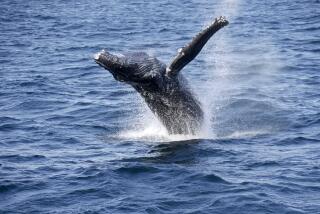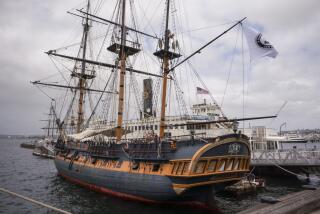Making Waves . . . Itâs One Hull of a Situation
The Skipper says: Because waves are the visible result of hull resistance, our main objective should be to eliminate them. Yet, wave-making has been accepted as a given or necessary evil for about 200 years. Book after book and article after article tells us that a displacement or semi-displacement hull causes waves that impose a limit on the speed of the hull.-- Nils Lucander, naval architect, in National Fisherman.
If youâre the skipper of a slow cruising sailboat like I am, you, too, become indignant at power boats that race by you, creating waves that send everything on the shelves below rattling and leaping.
Somewhere a long time ago, I got the idea that boats that throw up steep, sharp wakes astern had poorly designed hulls. Among the expletives I shout at power boats that send me rocking and rattling is the accusation of lousy hull design.
Now comes an expert who agrees with me, except that Lucander knows why and what heâs talking about. In an article on boat building in Augustâs National Fisherman, Lucander, after endless testing on towed models, found that his little boats that were the most sea-kindly and made the minimum of waves had underbodies in which the hull and the keel curved sharply back to the centerline aft.
Thus, âanother traditional rule of naval architecture had bit the dust, for it holds that fairing angles aft to a centerline shall not exceed 7 degrees or, sometimes, 8 degrees,â he said.
Lucanderâs best fairing angles in his tested models were much larger than that.
Later, he designed small yachts and commercial fishing vessels that put his theories to the test. He placed the hull and keel volume well aft of midship. In fact, the most voluminous keel sections were from 65% to 70% aft of their leading edges, a complete reversal of traditional design wisdom of the cod head/mackerel tail hull form.
Although some sailboats have been designed with asymmetrical bottoms with the widest section aft, virtually no one is producing engine-powered displacement craft with this type of conformation.
All of Lucanderâs power vessels, when run at the formula hull speeds of 8.7 knots, made waves that were hardly large enough to be measured.
Whatâs more, his wave-eliminating hull forms resulted in much easier driven vessels. Of this he says:
âThe potential for economic gain is huge, of course. First of all, boats can be fitted with smaller engines and power train appurtenances, reducing costs dramatically. Then come fuel economy and reduced maintenance expenses.â
And greater comfort than now, when a power boat zooms off course toward me to inspect me and sends me rocking, rolling and damning.
Sailing Notes Mussels are an up-and-coming cash crop on the West Coast. The largest producer of mussels, so far, is a company called Ecomar, which is harvesting mussels from the oil rigs in the Santa Barbara Channel. Last year, the operation sent more than 40,000 tons of mussels to market. Owner Bob Meek hopes to boost production by 250,000 pounds this year. Mussels are harvested from pilings by scuba divers and an underwater vacuum cleaner. . . . The first striped marlin of the season to be caught in Southern California waters was taken July 12 by Jack Johnson of Glendora with a Mean Joe Green lure while aboard Kathy Joe II of Oceanside.
More to Read
Sign up for The Wild
Weâll help you find the best places to hike, bike and run, as well as the perfect silent spots for meditation and yoga.
You may occasionally receive promotional content from the Los Angeles Times.






